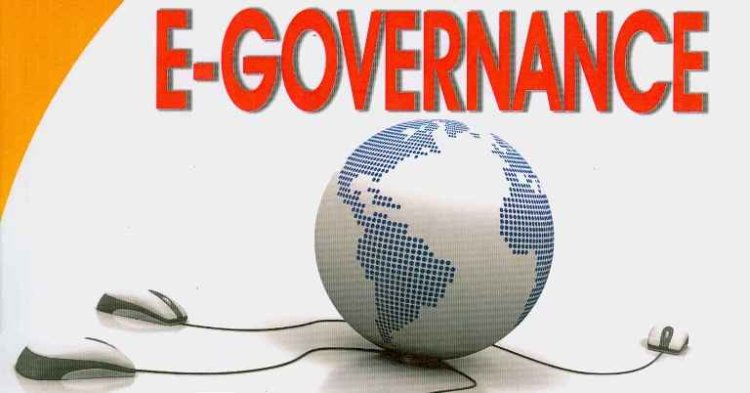Merits and Demerits of E-Governance
Share this Post to earn Money ( Upto ₹100 per 1000 Views )

E-governance, the integration of digital technology into government operations and services, has revolutionized the way public administration is conducted. By leveraging information and communication technologies (ICT), e-governance aims to improve efficiency, transparency, and accessibility in government functions. While e-governance offers numerous advantages, it also presents several challenges. This article explores the merits and demerits of e-governance, providing a balanced view of its impact on modern governance.
Merits of E-Governance
1. Increased Efficiency and Speed: E-governance enhances the efficiency of government operations by automating and streamlining processes. Digital tools and platforms enable faster processing of information and transactions, reducing bureaucratic delays and improving service delivery. For example, online tax filing systems and digital permit applications speed up administrative tasks and minimize processing times.
2. Improved Accessibility and Convenience: E-governance makes government services more accessible to citizens, particularly in remote or underserved areas. Online portals and mobile applications allow individuals to access services, submit requests, and receive information from the comfort of their homes. This increased accessibility can improve public engagement and ensure that services reach a broader audience.
3. Enhanced Transparency and Accountability: Digital platforms promote transparency by providing real-time access to government data and decision-making processes. E-governance systems often include features such as public dashboards, open data portals, and online tracking of applications, which help prevent corruption and increase accountability. This transparency fosters trust between the government and its citizens.
4. Cost Savings: Implementing e-governance can lead to significant cost savings for both the government and citizens. By reducing the need for physical paperwork, administrative overhead, and in-person interactions, digital systems lower operational costs and reduce the time spent on manual tasks. Additionally, online services can decrease travel expenses for citizens who no longer need to visit government offices.
5. Better Data Management: E-governance facilitates efficient data management through digital record-keeping and data analytics. Governments can store, analyze, and utilize large volumes of data to inform policy decisions, track performance, and improve service delivery. This data-driven approach can lead to more informed and effective governance.
6. Enhanced Communication and Engagement: Digital platforms enable better communication between government agencies and citizens. Social media, email, and online forums provide channels for public feedback, suggestions, and engagement. This enhanced communication can lead to more responsive and citizen-centric governance.
7. Increased Innovation: The adoption of e-governance encourages innovation in public administration. Governments can experiment with new technologies and digital solutions to improve services and address emerging challenges. For example, smart city initiatives leverage technology to enhance urban infrastructure and services.
8. Improved Disaster Response: E-governance tools can enhance disaster response and management by providing real-time information, coordination, and communication. Digital platforms enable governments to disseminate emergency alerts, coordinate relief efforts, and monitor disaster impacts more effectively.
Demerits of E-Governance
1. Digital Divide: E-governance can exacerbate the digital divide, where certain segments of the population lack access to technology or the internet. This disparity can lead to unequal access to government services and information, particularly affecting low-income individuals, rural communities, and older adults.
2. Security and Privacy Concerns: The use of digital platforms raises concerns about data security and privacy. Cybersecurity threats, such as hacking, data breaches, and identity theft, pose risks to sensitive government and personal information. Ensuring robust security measures and protecting citizen data is a critical challenge for e-governance.
3. Implementation Costs: Establishing and maintaining e-governance systems can involve substantial costs. Governments must invest in technology infrastructure, software, training, and ongoing maintenance. These costs can be a barrier for some governments, particularly in developing regions with limited resources.
4. Technical Issues and System Failures: E-governance systems are susceptible to technical issues and system failures, such as software bugs, server outages, and connectivity problems. These issues can disrupt services, cause delays, and impact the reliability of digital platforms.
5. Resistance to Change: The transition to e-governance can face resistance from both government employees and citizens. Government staff may be reluctant to adopt new technologies, and citizens may prefer traditional methods or feel uncomfortable using digital platforms. Overcoming this resistance requires effective change management and training.
6. Lack of Inclusivity: Not all citizens may be comfortable or proficient with digital technologies. E-governance systems that rely solely on digital interactions may exclude individuals who lack digital literacy or have disabilities that hinder their ability to use online services. Ensuring inclusivity requires providing alternative methods for accessing services.
7. Potential for Digital Fraud: The digital nature of e-governance introduces opportunities for digital fraud and abuse. Fraudulent activities, such as fake online accounts, phishing scams, and fraudulent transactions, can undermine the integrity of e-governance systems and erode public trust.
8. Dependence on Technology: E-governance systems rely heavily on technology, which can create dependencies that may be problematic if technical issues arise. A reliance on technology also requires continuous updates and adaptation to evolving technological trends, which can be resource-intensive.
Conclusion
E-governance offers numerous benefits, including increased efficiency, improved accessibility, enhanced transparency, cost savings, better data management, enhanced communication, increased innovation, and improved disaster response. These advantages demonstrate how digital technology can transform public administration and service delivery.
However, e-governance also presents challenges, such as the digital divide, security and privacy concerns, implementation costs, technical issues, resistance to change, lack of inclusivity, potential for digital fraud, and dependence on technology. Addressing these challenges is crucial for maximizing the effectiveness of e-governance and ensuring that its benefits are realized across all segments of society.
By understanding both the merits and demerits of e-governance, policymakers, government agencies, and citizens can work together to harness the potential of digital technology while addressing its limitations. This balanced approach can lead to more effective, inclusive, and resilient governance in the digital age.













